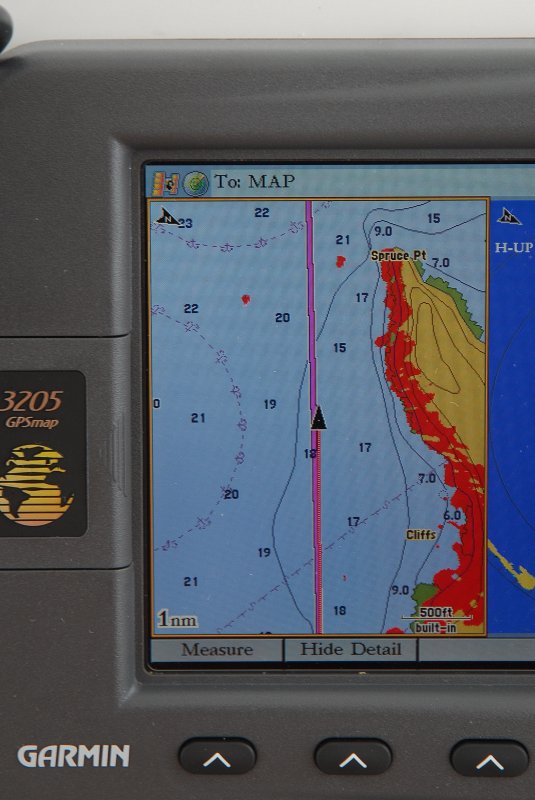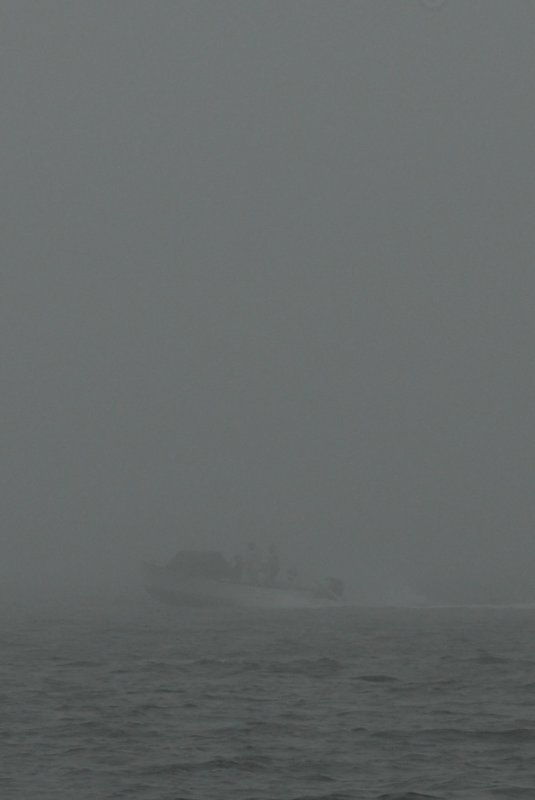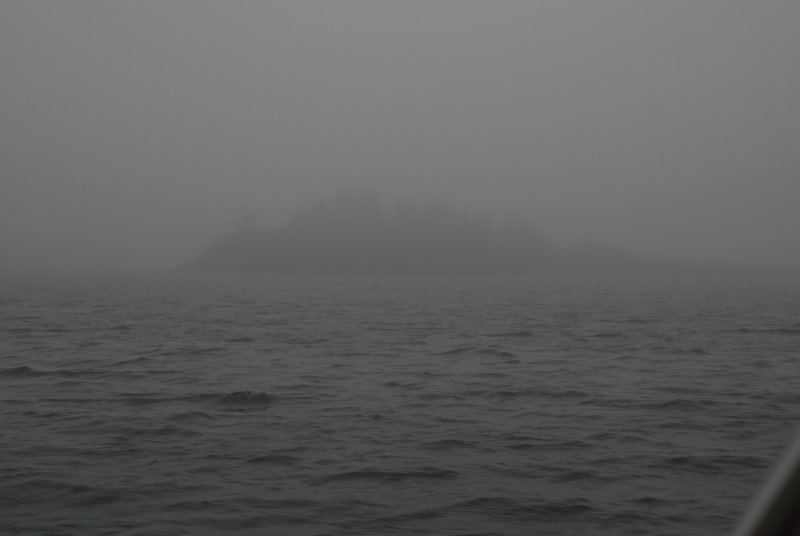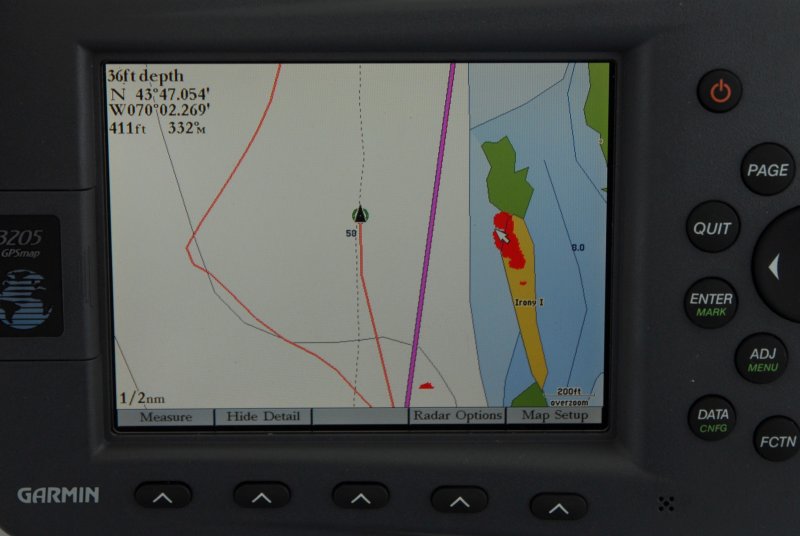We are coastal sailors and I rely on electronic charts to get us around the rocky coast of Maine. Chart plotters free us up to do things like sail into our anchorage and onto our anchor, which we did here, the night before.

In the typical Maine morning zephyr, we raised sails and hoisted the anchor to sail out, just for fun again. But the light wind meant we couldn't sail the well marked, Deer Island Thoroughfare on our way east. We'd have to adjust the sails onto a close reach, and tack through places we've never gone before.

You'll notice on this Ipad with Garmin Blue Chart, the track shows us going right over some rocks. An easy explanation: Our Ipad has an external GPS antenna (bad idea, I think), and the battery went dead. At first you think you're where you boat icon is, and just keep going.
When I noticed the difference on a mounted GPS CP, I figured it out (this has happened before). I also double checked my Iphone to confirm where I was which gave me time to go below and plug the Garmin Glo antenna into the charger(that's were the Ipad track shot straight through the rocks), check depth sounder to E charts, took visual bearings on obvious islands. No panic.

That meandering slow sail, which covered 10.4 miles of water that we've never sailed; outside of the marked channels and through hundreds of unmarked (but well charted) rocks around the edges of Jericho bay, lasted about 4 1/2 hours. The typical Southwest wind never filled in that day (which is,...pretty typical).
I think back to when we first sailed, even without Loran. Piloting on a chart to keep our position - with all those rocks around, I don't think I would have tried this sail without E-charts and CP's.
The new tech has changed the way we sail. How about you?
In the typical Maine morning zephyr, we raised sails and hoisted the anchor to sail out, just for fun again. But the light wind meant we couldn't sail the well marked, Deer Island Thoroughfare on our way east. We'd have to adjust the sails onto a close reach, and tack through places we've never gone before.
You'll notice on this Ipad with Garmin Blue Chart, the track shows us going right over some rocks. An easy explanation: Our Ipad has an external GPS antenna (bad idea, I think), and the battery went dead. At first you think you're where you boat icon is, and just keep going.
When I noticed the difference on a mounted GPS CP, I figured it out (this has happened before). I also double checked my Iphone to confirm where I was which gave me time to go below and plug the Garmin Glo antenna into the charger(that's were the Ipad track shot straight through the rocks), check depth sounder to E charts, took visual bearings on obvious islands. No panic.
That meandering slow sail, which covered 10.4 miles of water that we've never sailed; outside of the marked channels and through hundreds of unmarked (but well charted) rocks around the edges of Jericho bay, lasted about 4 1/2 hours. The typical Southwest wind never filled in that day (which is,...pretty typical).
I think back to when we first sailed, even without Loran. Piloting on a chart to keep our position - with all those rocks around, I don't think I would have tried this sail without E-charts and CP's.
The new tech has changed the way we sail. How about you?






